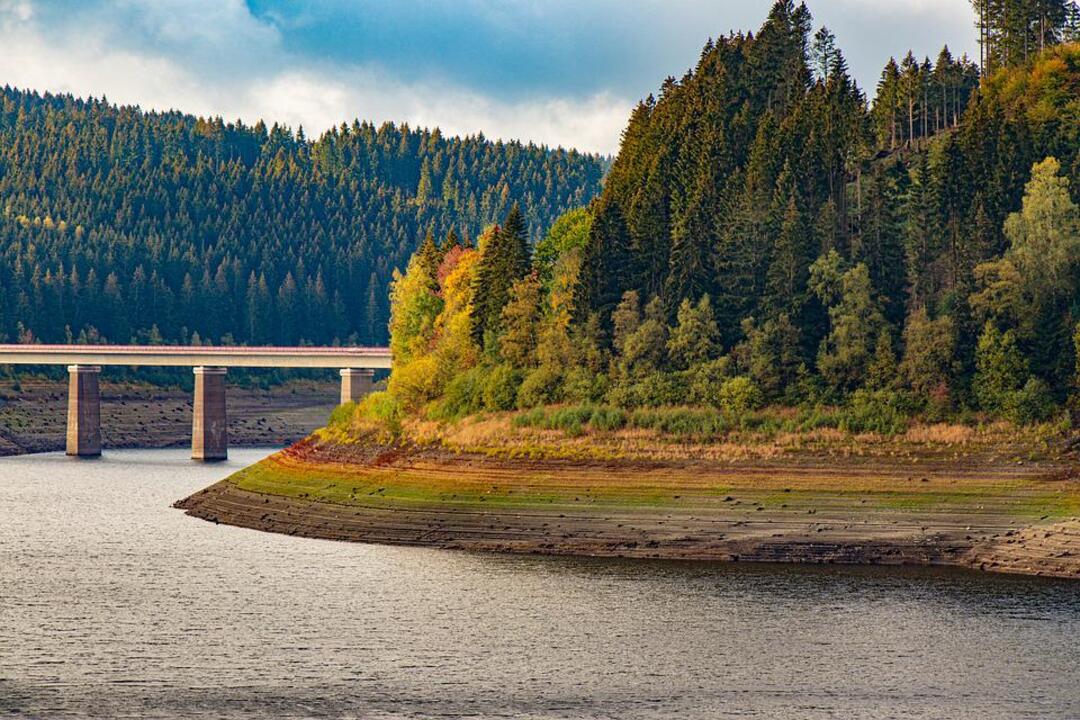-
Climate change: Drought and heat drain Spanish reservoirs

A flock of sheep shelter from the midday sun under the gothic arches of a medieval bridge flooded in 1956 to create the Cijara reservoir in central Spain, but now fully exposed as the reservoir is 84 percent empty after a severe drought, the al-Arabiya English reported.
In Andalusia, one of Europe's hottest and driest regions, paddle-boats and waterslides lie abandoned on the cracked bed of Vinuela reservoir, remnants of a rental business gone with the water, now at a critical level of 13 percent. A nearby restaurant fears a similar fate.
“The situation is quite dramatic in the sense that it's been several years without rain and we're hitting rock bottom,” said owner Francisco Bazaga, 52. “If it doesn't rain, unless they find some alternative water supply, the future is very, very dark.”
A prolonged dry spell and extreme heat made July the hottest month in Spain since at least 1961. Spanish reservoirs are at just 40 percent of capacity on average in early August, well below the 10-year average of around 60 percent, official data shows.

“We are in a particularly dry year, a very difficult year that confirms what climate change scenarios have been highlighting,” Energy Minister Teresa Ribera told a news conference on Monday, also highlighting that the drought was leading to devastating wildfires.
PM Pedro Sanchez: 'More than 500 died' from heatwave in Spain
Climate change has left parts of the Iberian peninsula at their driest in 1,200 years, and winter rains are expected to diminish further, a study published last month by the Nature Geoscience journal showed.
The dry, hot weather is likely to continue into the autumn, Spain's meteorological service AEMET said in a recent report, putting further strain on Europe's largest network of dammed reservoirs with a holding capacity of 5.6 billion cubic meters.
At the Buendia reservoir east of Madrid, the ruins of a village and bathhouses have reappeared, caked in dried mud, Reuters drone footage showed, while at another dam near Barcelona a ninth-century Romanesque church has reemerged still intact, attracting visitors.
Source: alarabiyaenglish
You May Also Like
Popular Posts
Caricature
BENEFIT Sponsors BuildHer...
- April 23, 2025
BENEFIT, the Kingdom’s innovator and leading company in Fintech and electronic financial transactions service, has sponsored the BuildHer CityHack 2025 Hackathon, a two-day event spearheaded by the College of Engineering and Technology at the Royal University for Women (RUW).
Aimed at secondary school students, the event brought together a distinguished group of academic professionals and technology experts to mentor and inspire young participants.
More than 100 high school students from across the Kingdom of Bahrain took part in the hackathon, which featured an intensive programme of training workshops and hands-on sessions. These activities were tailored to enhance participants’ critical thinking, collaborative problem-solving, and team-building capabilities, while also encouraging the development of practical and sustainable solutions to contemporary challenges using modern technological tools.
BENEFIT’s Chief Executive Mr. Abdulwahed AlJanahi, commented: “Our support for this educational hackathon reflects our long-term strategic vision to nurture the talents of emerging national youth and empower the next generation of accomplished female leaders in technology. By fostering creativity and innovation, we aim to contribute meaningfully to Bahrain’s comprehensive development goals and align with the aspirations outlined in the Kingdom’s Vision 2030—an ambition in which BENEFIT plays a central role.”
Professor Riyadh Yousif Hamzah, President of the Royal University for Women, commented: “This initiative reflects our commitment to advancing women in STEM fields. We're cultivating a generation of creative, solution-driven female leaders who will drive national development. Our partnership with BENEFIT exemplifies the powerful synergy between academia and private sector in supporting educational innovation.”
Hanan Abdulla Hasan, Senior Manager, PR & Communication at BENEFIT, said: “We are honoured to collaborate with RUW in supporting this remarkable technology-focused event. It highlights our commitment to social responsibility, and our ongoing efforts to enhance the digital and innovation capabilities of young Bahraini women and foster their ability to harness technological tools in the service of a smarter, more sustainable future.”
For his part, Dr. Humam ElAgha, Acting Dean of the College of Engineering and Technology at the University, said: “BuildHer CityHack 2025 embodies our hands-on approach to education. By tackling real-world problems through creative thinking and sustainable solutions, we're preparing women to thrive in the knowledge economy – a cornerstone of the University's vision.”
opinion
Report
ads
Newsletter
Subscribe to our mailing list to get the new updates!






















